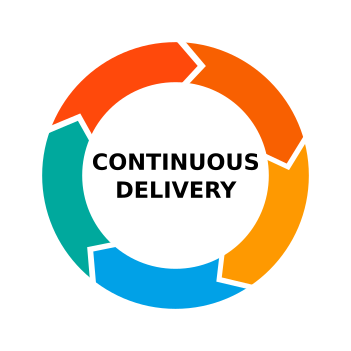Navigating the Challenges of Continuous Delivery in Software
Written on
Understanding Continuous Delivery
Continuous delivery presents significant challenges. It is not a straightforward task to master all the various components involved in automating the processes of packaging, configuring, deploying, testing, and releasing code. Implementing a comprehensive continuous delivery system cannot be achieved in just a week; it demands time and concerted effort.
When each step of the delivery process relies on different tools, teams, or locations, the prospect of delivering code continuously can seem daunting. However, it is indeed possible to achieve daily code delivery without mastering an array of tools or coordinating with multiple teams within an organization.
What Does Continuous Delivery Entail?
Continuous delivery refers to the capability of transitioning from source code to production efficiently through a fully automated system. This approach facilitates small, frequent updates that reduce risk while enhancing feedback. While the advantages of continuous delivery are widely recognized, the methods of implementation can differ significantly. Some teams manage to deploy changes to production every few minutes, whereas others may take weeks or even months to release new code.
The Path from Code to Production
Most teams should ideally be able to deliver updates on a daily basis. However, several obstacles can hinder this goal.
Identifying the Challenges
A major factor influencing the effectiveness of continuous delivery is the division between development and operations teams. Resourcing plays a crucial role in shaping team culture.
While it is relatively easy to find developers keen to write code, it is more challenging to locate those interested in managing infrastructure. Conversely, operations personnel often prefer infrastructure management over coding. This divide complicates the search for individuals willing to engage in writing, deploying, testing, releasing, and supporting services, especially since many in the industry prefer to segregate these responsibilities among different teams or departments.
Tools and Vendors: A Double-Edged Sword
The market is flooded with a myriad of tools and vendors for each aspect of the continuous delivery pipeline. This abundance makes it simple to introduce new tools, which can inadvertently complicate the tech stack and elevate the level of expertise required, often obscuring the fundamental principles of software delivery.
Even with a separate tool for every stage of continuous delivery, teams frequently encounter gaps and integration challenges that necessitate a comprehensive understanding of the entire stack to address. This underscores the importance of maintaining a streamlined toolkit and viewing additional tools as a form of technical and business debt.
The Need for Fundamental Training
While guidance on vendor-specific tools is readily available, resources for grasping the foundational concepts are scarce. So, where can we acquire these essential skills?
In my experience, there is an abundance of theoretical knowledge regarding continuous delivery, but a lack of practical implementation guidance. I believe this gap is a pressing issue that needs to be addressed within the industry.
Making Continuous Delivery More Accessible
When faced with complex challenges, we must carefully evaluate our options. As Kent Beck wisely stated, "make the change easy, then make the easy change." But how can we simplify these changes?
First, it is vital to minimize the number of tools we utilize and concentrate on a select few key solutions. The more tools in use, the more fragmented knowledge becomes, making it difficult to share effectively.
Across the industry, various tools are employed—from code editors to domain-specific languages (DSLs) and command-line interfaces (CLIs). Yet, the one constant we can rely on is code. Instead of focusing on declarative languages or CLI tools, we should prioritize writing reusable code packages that can be integrated with other tasks. There is no compelling reason why we cannot handle packaging, configuring, deploying, testing, and releasing code within a single programming language while managing its dependencies.
Investing in Fundamental Knowledge
Next, we should focus on grasping the underlying implementation. Rather than learning numerous tools, we can delve into the fundamentals of the necessary steps and automation. Although this approach may be more challenging at first, it fosters better long-term outcomes since tools are transient, but knowledge is enduring.
Iterate to Improve
Lastly, it is essential to continuously iterate on our implementation. Regardless of the simplicity of the system or the depth of our knowledge, improvement is impossible without iteration, as each environment presents unique challenges. Each adjustment we make may yield varying results, and the only way to determine effectiveness is through experimentation.
Conclusion: A Path Forward
While continuous delivery can be a complex endeavor, it does not have to be overwhelming. By simplifying our requirements, honing our understanding, and investing in education, we can enhance our capability to deliver software consistently.
I recently shared a tutorial showcasing a minimal viable product (MVP) for continuous delivery that employs only Bash, Python, and AWS—resources accessible to any developer with coding skills.
I aim to elevate the quality of software delivery across the industry. Please share your thoughts on the value of this content or any suggestions you might have.
Follow me for more insights or reach out to me at:
Twitter: @BenTorvo
Email: [email protected]
Website: torvo.com.au

Chapter 2: Essential Videos for Continuous Delivery
Video Description: This video explores the untold truths about microservices, shedding light on their complexities and advantages.
Video Description: This video clarifies the distinction between continuous delivery and continuous deployment, crucial concepts for modern software practices.